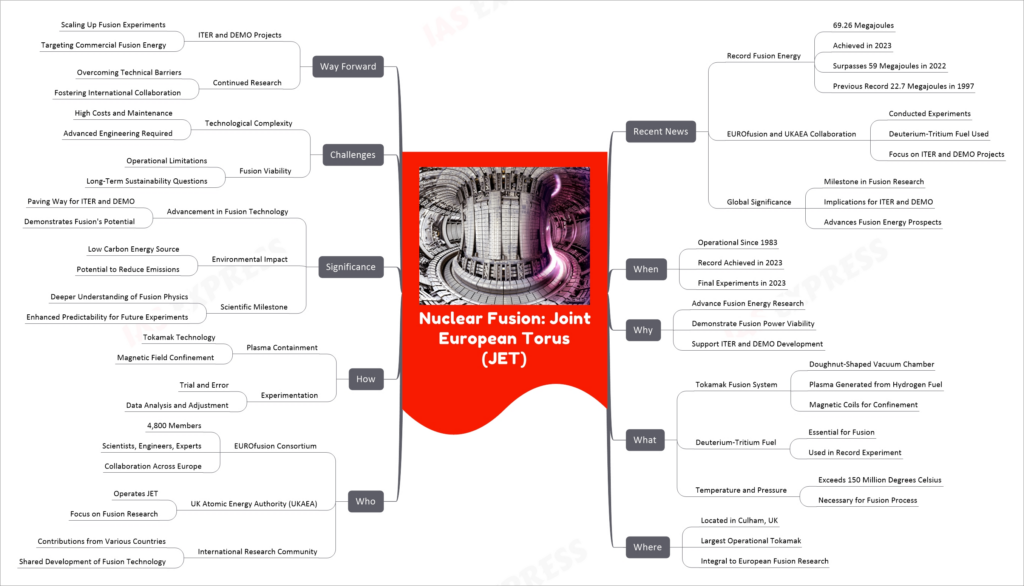Nuclear Fusion: Joint European Torus (JET)

The Joint European Torus (JET) is a pivotal project in the field of nuclear fusion energy, particularly in its application for power generation. Recently, JET achieved a significant milestone by setting a new world record in fusion energy output, producing 69.26 megajoules of heat during a single pulse. This record, achieved in 2023, surpassed the previous records set in 2022 and 1997. The JET project, a collaboration between the EUROfusion consortium and the UK Atomic Energy Authority (UKAEA), is the largest and most powerful operational tokamak fusion system in the world. It operates by creating a plasma from hydrogen fuel within a doughnut-shaped vacuum chamber, using extreme heat and pressure. This plasma is then confined and controlled by magnetic fields.
JET’s recent achievements are a significant step forward in the development of fusion energy, demonstrating the viability and potential of fusion power. This progress is crucial for the ITER project and the future DEMO power plant, both of which aim to demonstrate the scientific and technical feasibility of fusion energy on a larger scale. JET’s work in advancing fusion technology, understanding fusion physics, and developing operational scenarios is essential for the future of low-carbon energy sources and tackling the global energy crisis.
However, the development of fusion energy faces several challenges, including the technological complexity of fusion systems, high costs, and questions about long-term sustainability. The way forward involves scaling up fusion experiments through projects like ITER and DEMO, overcoming technical barriers, and fostering international collaboration in fusion research.
If you like this post, please share your feedback in the comments section below so that we will upload more posts like this.

